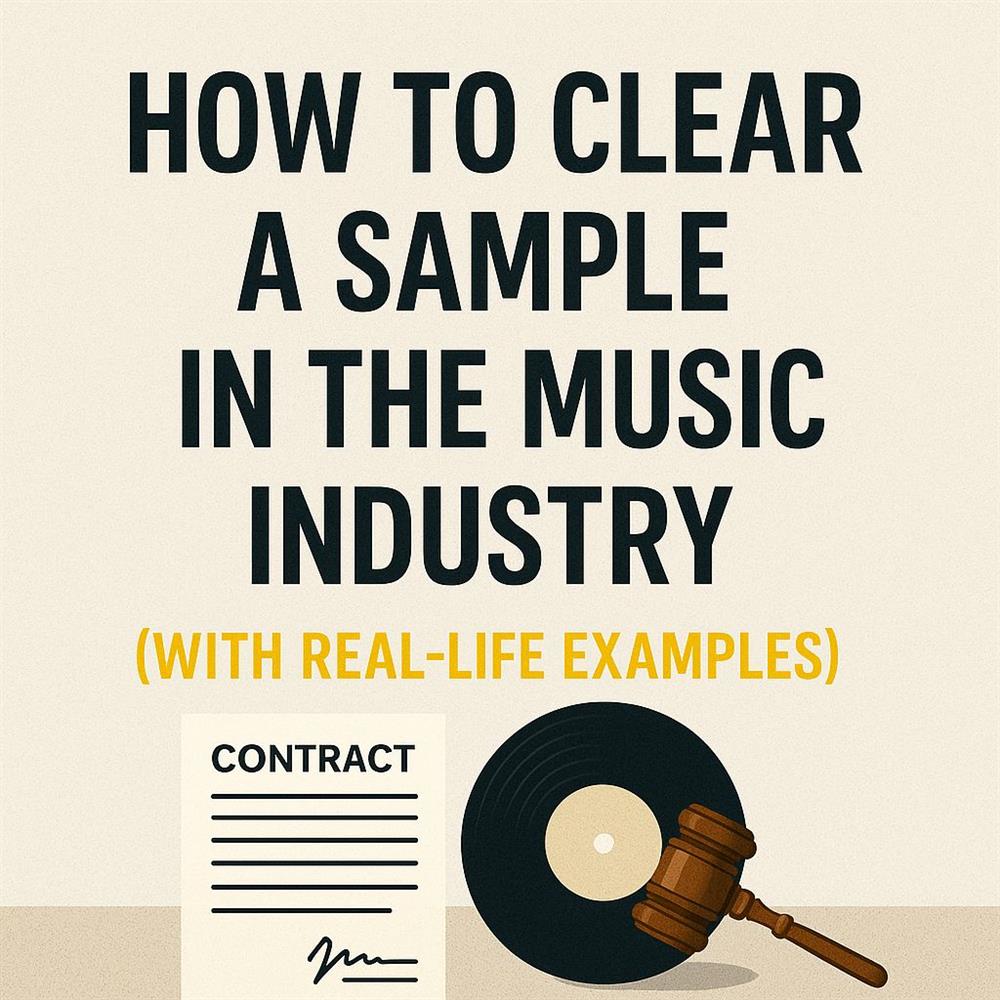Sampling is one of the most influential and enduring practices in music production. From Kanye West flipping soul records into hip-hop anthems to Daft Punk reimagining funk grooves into electronic masterpieces, samples connect generations of music. But before any sampled track can be commercially released, one crucial step must happen: sample clearance.
Failing to clear a sample can lead to lawsuits, lost revenue, and takedowns from DSPs (digital streaming platforms). Just ask artists like Juice WRLD, who...
Show All...
Sampling is one of the most influential and enduring practices in music production. From Kanye West flipping soul records into hip-hop anthems to Daft Punk reimagining funk grooves into electronic masterpieces, samples connect generations of music. But before any sampled track can be commercially released, one crucial step must happen: sample clearance.
Failing to clear a sample can lead to lawsuits, lost revenue, and takedowns from DSPs (digital streaming platforms). Just ask artists like Juice WRLD, who faced posthumous sample-related controversies, or Lil Nas X, whose early version of “Old Town Road” was temporarily held back from commercial distribution due to sample issues.
In this article, we'll walk you through the step-by-step process of clearing a sample in today’s music industry, share key tips, and highlight real-world examples of how artists and producers have navigated the sample clearance process successfully.
What Does “Clearing a Sample” Mean?
When you sample a piece of music, whether it’s a vocal line, drum loop, melody, or even a short soundbite, you’re using someone else’s copyrighted material. To legally use it in your own track, you need permission from two rights holders:
-
Master Owner – whoever owns the actual recording (usually a label)
-
Publishing Owner(s) – whoever owns the composition/songwriting rights (typically the writers and publishers)
You must license both in order to legally clear the sample. Skipping either could expose you to legal action.
Step 1: Identify What You Sampled
Before you can start clearing anything, you need to know exactly what song you sampled and determine the length and nature of the sample.
Real Example: Drake’s “Nice for What”
In “Nice for What,” Drake used a recognizable sample from Lauryn Hill’s “Ex-Factor.” That sample wasn’t just a background layer, it was the emotional core of the record. Because the sample was taken directly from the master and the publishing, Drake’s team had to clear both through Sony (for the master) and the original publishers representing Lauryn Hill and her co-writers.
Step 2: Find the Rights Holders
Once you’ve identified the song, you’ll need to track down the owners of both the master and the publishing. Here’s how:
Step 3: Make the Request
When you’ve identified the rights owners, it’s time to reach out. Being detailed, transparent, and professional in your request goes a long way.
Real Example: Kanye West’s “Stronger”
Kanye’s Stronger famously samples Daft Punk’s “Harder, Better, Faster, Stronger.” Not only did Daft Punk approve the sample, but they also embraced it creatively, leading to a longer-term relationship with Kanye. Respectful clearance doesn’t just prevent lawsuits, it can open doors for collaboration.
Step 4: Negotiate the Terms
Once the rights holders agree in principle, you’ll need to negotiate terms. This usually involves royalty splits, upfront fees,and usage limitations.
Step 5: Draft/Sign the Agreements
Once the terms are agreed upon, all parties will sign a sample license agreement. These contracts outline how the sample can be used and ensure everyone’s rights and responsibilities are legally protected.
Step 6: Register the Song Properly
Once the sample is cleared and the paperwork is finalized, you’ll need to register the new song with distributors and PROs. Ensure that all splits, writer shares, and credits are listed correctly and line up with the sample license agreement.
A Modern Solution for Sample Licensing: Missing Link Music x EasySong
This might sound like a lot to handle solo, especially if you’re new to the space. That’s why Missing Link Music has officially partnered with EasySong! So instead of spending weeks chasing down rights holders or navigating legal hoops, artists get the tools and support to make sampling simple, fast, and legal.
Through our partnership, we’re offering a centralized clearance process, handling both mechanical and master rights, providing free consultations, delivering real-time quotes with fast turnaround, and giving creators a digital paper trail that protects their work.
Whether you're sampling a jazz loop for a hip-hop beat or flipping a classic rock hook into a modern pop track, this collaboration is a game-changer for producers, songwriters, and recording artists who frequently work with samples or covers in their creative process.
You can kick off your sample clearance now by using [this link] which is currently open to the public!
For Missing Link specific clients, our partnership with EasySong combines our publishing expertise with their tech-forward platform to:
-
Clear samples faster and cheaper
-
Access pre-cleared catalogs with less risk
-
Cut legal uncertainty
-
Stay focused on the music, not the paperwork
It’s a game-changer for indie artists and producer-led teams without in-house clearance help, giving you a modern, professional path to releasing music that’s safe and monetizable.
Sampling is an art form that pays homage to music’s past while pushing it into the future. But creativity doesn’t need to come at the cost of legality. With the right knowledge and the right partners, you can flip samples confidently, clear them properly, and get your music out into the world the right way.
Show Less...